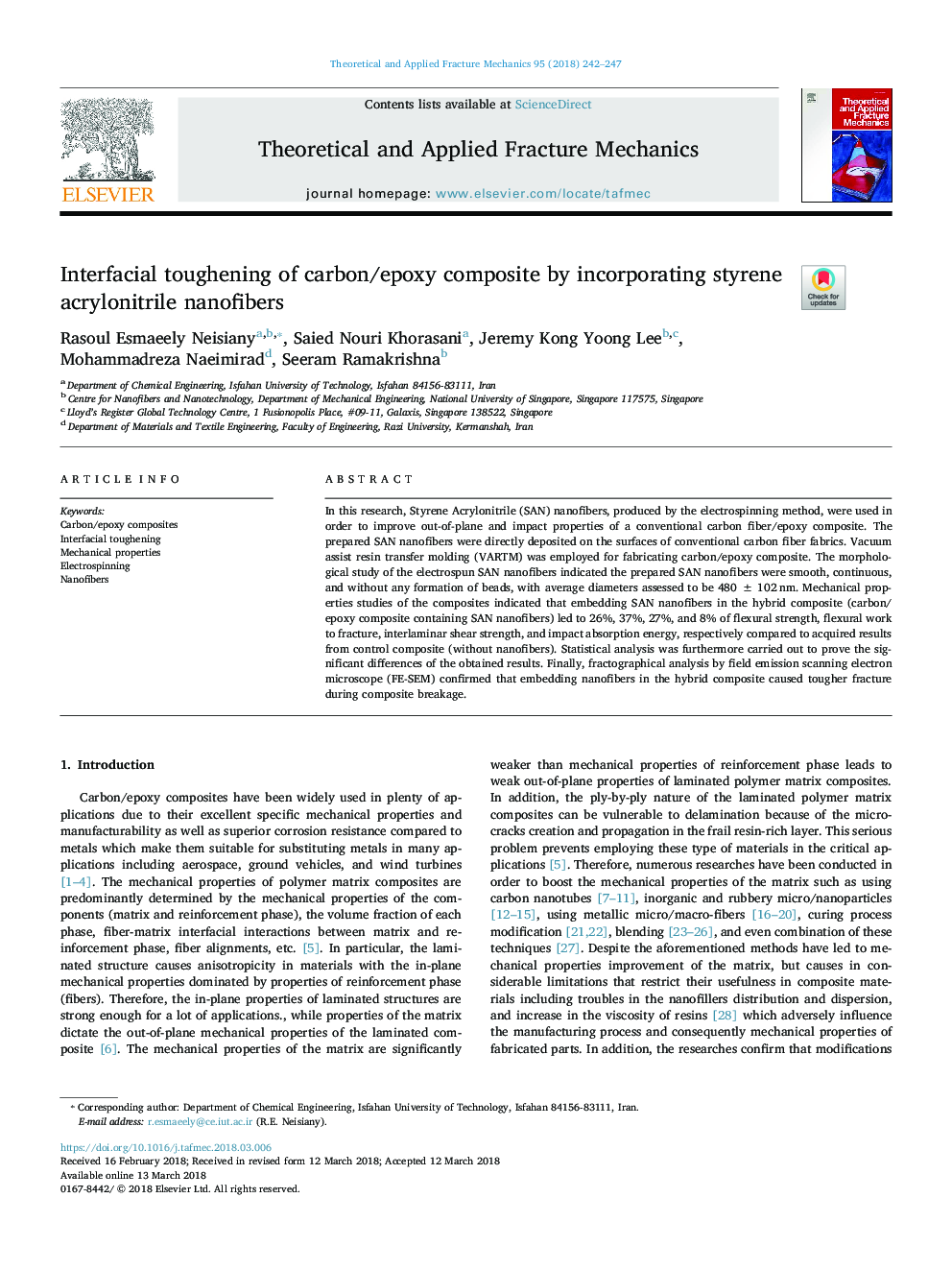| Article ID | Journal | Published Year | Pages | File Type |
|---|---|---|---|---|
| 7196170 | Theoretical and Applied Fracture Mechanics | 2018 | 6 Pages |
Abstract
In this research, Styrene Acrylonitrile (SAN) nanofibers, produced by the electrospinning method, were used in order to improve out-of-plane and impact properties of a conventional carbon fiber/epoxy composite. The prepared SAN nanofibers were directly deposited on the surfaces of conventional carbon fiber fabrics. Vacuum assist resin transfer molding (VARTM) was employed for fabricating carbon/epoxy composite. The morphological study of the electrospun SAN nanofibers indicated the prepared SAN nanofibers were smooth, continuous, and without any formation of beads, with average diameters assessed to be 480â¯Â±â¯102â¯nm. Mechanical properties studies of the composites indicated that embedding SAN nanofibers in the hybrid composite (carbon/epoxy composite containing SAN nanofibers) led to 26%, 37%, 27%, and 8% of flexural strength, flexural work to fracture, interlaminar shear strength, and impact absorption energy, respectively compared to acquired results from control composite (without nanofibers). Statistical analysis was furthermore carried out to prove the significant differences of the obtained results. Finally, fractographical analysis by field emission scanning electron microscope (FE-SEM) confirmed that embedding nanofibers in the hybrid composite caused tougher fracture during composite breakage.
Related Topics
Physical Sciences and Engineering
Engineering
Mechanical Engineering
Authors
Rasoul Esmaeely Neisiany, Saied Nouri Khorasani, Jeremy Kong Yoong Lee, Mohammadreza Naeimirad, Seeram Ramakrishna,
